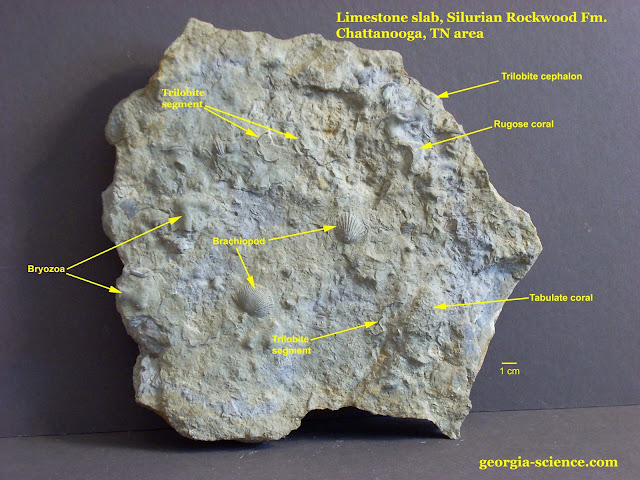
Figure 1.
As a teacher, I would call this a "Bonanza slab", as there are several types of fossils on a single limestone slab. It illustrates the concept of biodiversity (or species diversity) in a Sub-Tropical shallow continental shelf setting or perhaps a shallow carbonate platform setting.
This limestone slab is from the Silurian Rockwood Formation exposed west of Chattanooga, TN, off I-24. Among the more easily seen fossils are brachiopods, rugose corals, tabulate corals, bryozoa, and trilobite fragments. There are fragments of smaller fossils, such as stalked echinoderms.
According to a professor at Univ. of Tennessee - Chattanooga, the Rockwood Formation is an offshore equivalent of the Red Mountain Formation, which consists of red shales, siltstones, and sandstones deposited in tidal flat and delta environments. The Red Mountain Formation was deposited due to the erosion of the Taconic Highlands, which lay to the present-day east and southeast. The Taconic Highlands, uplifted during the Late Ordovician Period represented the first uplift of what would become (much later) the Appalachian Mountains.
No comments:
Post a Comment